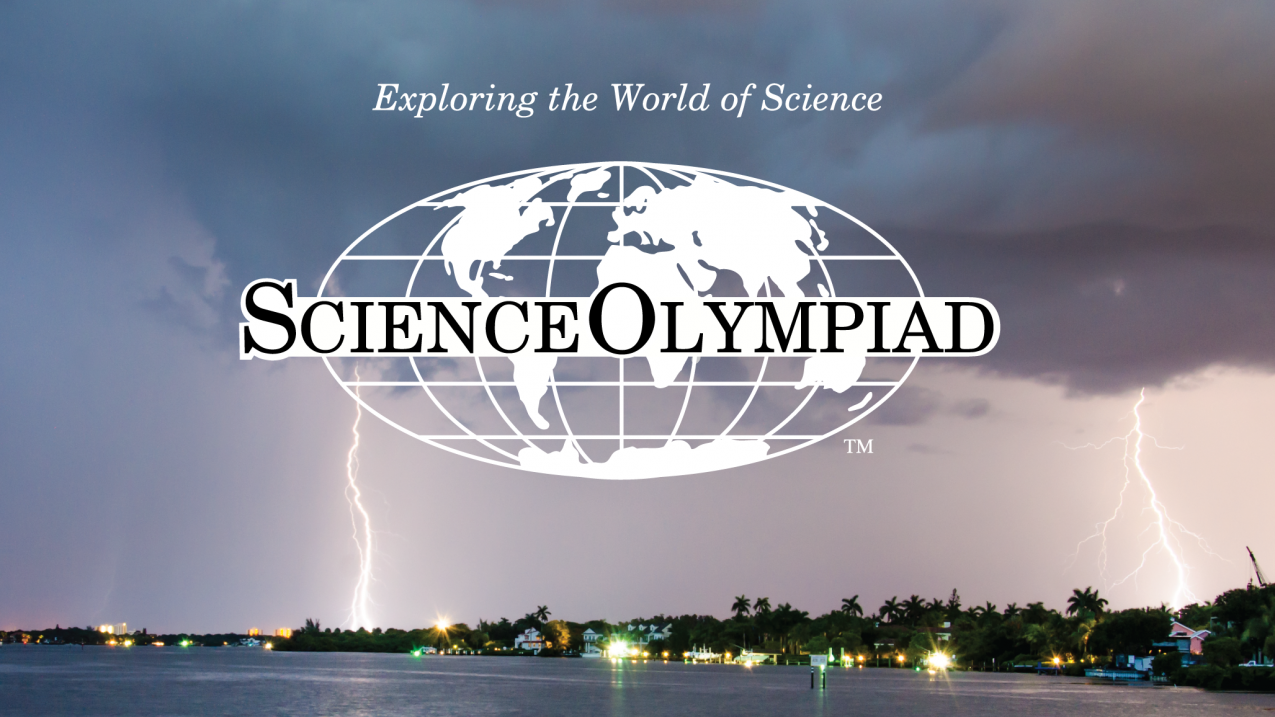Resources for the 2024 Science Olympiad challenge in Meteorology: Severe storms
Science Olympiad is a national STEM competition dedicated to improving the quality of K-12 science education, increasing interest and engagement in science, and providing recognition for outstanding achievement by students and teachers. Science Olympiad tournaments emphasize teamwork, problem solving, and hands-on learning practices. For more information about Science Olympiad, visit www.soinc.org offsite link. Here, we share resources from NOAA and our federal partners.

Science Olympiad logo (Image credit: Science Olympiad; Background image courtesy of Sam Farkas. )
Background information
JetStream: An online school for weather
JetStream has comprehensive information on a variety of meteorology and atmospheric science topics, including severe weather phenomena, winds, precipitation, atmospheric circulation, upper air charts, global weather, synoptic weather, and smaller scale phenomena like thunderstorms, Doppler radar, satellites, and more. Browse the sections: tropical weather systems, thunderstorms, lightning, derechos, and tsunamis.
National Severe Storms Lab
The National Severe Storms Lab (NSSL) research laboratory studies a wide range of severe weather, including tornadoes, lightning, winds, hail, flash floods, and winter weather. New technology developed by NSSL, including research into the topics of weather processes, radars, and models, benefits National Weather Service forecasters by providing them with new tools. NSSL’s education page can help your students jump into the world of severe weather. The Severe Weather 101 portal includes overviews a variety of phenomena.
Storm Prediction Center
The National Weather Service’s Storm Prediction Center’s (SPC) is a great source for current severe weather conditions and forecasts, climatologies, and general references. SPC focuses mainly on forecasting severe weather phenomena and fire weather outlooks. The mesoscale analysis page provides a detailed look at smaller scale conditions that may lead to severe weather and includes maps and meteorological features. Archives provide analysis of past events, along with archived local storm reports. The FAQ allows you to quickly find introductory information about SPC forecast products and severe weather phenomena.
Weather Spotter’s Field Guide
A part of SKYWARN® Storm Spotter training, this useful guide includes explanations and safety information about severe weather phenomena. The guide explains thunderstorm characteristics, hail, winds, lightning, and tornadoes with great photos and illustrations. The guide also discusses how Doppler radar can be used to monitor severe weather.
National Hurricane Center
The National Hurricane Center (NHC) issues watches, warnings, forecasts, and analyses of hazardous tropical weather. The NHC web site provides hazardous tropical weather information for the northern Atlantic and the eastern portion of the northern Pacific Oceans. The educational resources section includes information about the hurricane life cycle, NHC forecast processes and forecast products, and tropical cyclone-related hazards like storm surge, as well as a glossary and comprehensive FAQ.
Central Pacific Hurricane Center
The Central Pacific Hurricane Center focuses on hazardous tropical cyclones and the potential for them for the portion of the Pacific Ocean from 140° W to 180° W longitude. Their website includes outlooks, forecast discussions, a glossary, and an FAQ with information about tropical systems in this region.
National Weather Service Weather Prediction Center
The National Weather Service Weather Prediction Center (WPC) is part of the National Centers for Environmental Prediction. The WPC provides weather maps and analyses and predictions related to surface weather, including fronts and potential for excessive rainfall and winter weather.
NOAA SciJinks
SciJinks features information, illustrations, and learning tools for many different weather topics! The precipitation simulator may be particularly helpful to Science Olympiad students.
National Weather Service safety information
The National Weather Service safety page offers life-saving tips for before, during, and after hazardous weather. It also defines watches versus warnings.
Data resources and archives of past data
Storm Events Database
The Storm Events Database contains the records used to create the official NOAA Storm Data publication. The database currently contains data from January 1950 to August 2023, as entered by NOAA's National Weather Service (NWS).
Billion-Dollar Weather and Climate Disasters
The National Centers for Environmental Information (NCEI) is responsible for monitoring and assessing the climate. NCEI tracks and evaluates climate events in the U.S. and globally that have great economic and societal impacts. Explore their reporting that dates back to 1980.
NOAA Satellite and Information Service imagery and data
Explore and download real-time and archived high resolution satellite imagery.
National Forecast Chart Archive
View forecast charts from 2001 through the present.
Convective Watches Archive
View narrative and graphic severe thunderstorm threats from 2004 through the present.
Storm Prediction Center Product & Report Archives
Explore archives of convective outlooks, mesoscale discussions, severe weather watches, thunderstorm outlooks, fire weather outlooks, and preliminary storm reports.
Joint Typhoon Warning Center (U.S. Navy)
The Joint Typhoon Warning Center monitors the Indian and western Pacific Ocean for hazardous tropical cyclones and conditions that may produce such storms. The Annual Tropical Cyclone Reports archives maps of storm tracks and summaries of the storms that occurred in each year.
Severe weather events and cases
2023
2022
2021
2020
- 2020 Atlantic Hurricane Season
- 2020 Eastern Pacific Hurricane Season
- Hurricane Laura advisory archive (2020)
- Hurricane Isaias advisory archive (2020)
- 2020 U.S. spring flood outlook (March 2020)
Historic severe events
- Archived storm summaries (2004 - 2023)
- Great Blizzard of 1888
- 1900 Galveston Hurricane
- Dust Bowl of the 1930s
- 1974 Super Outbreak: Xenia F5 Track Map
- Hurricane Andrew (1992)
- The Great Flood of 1993
- The 1993 “Storm of the Century"
- Hurricane Katrina (2005)
- 2011 Spring tornado outbreaks
- Hurricane Sandy (2012)

